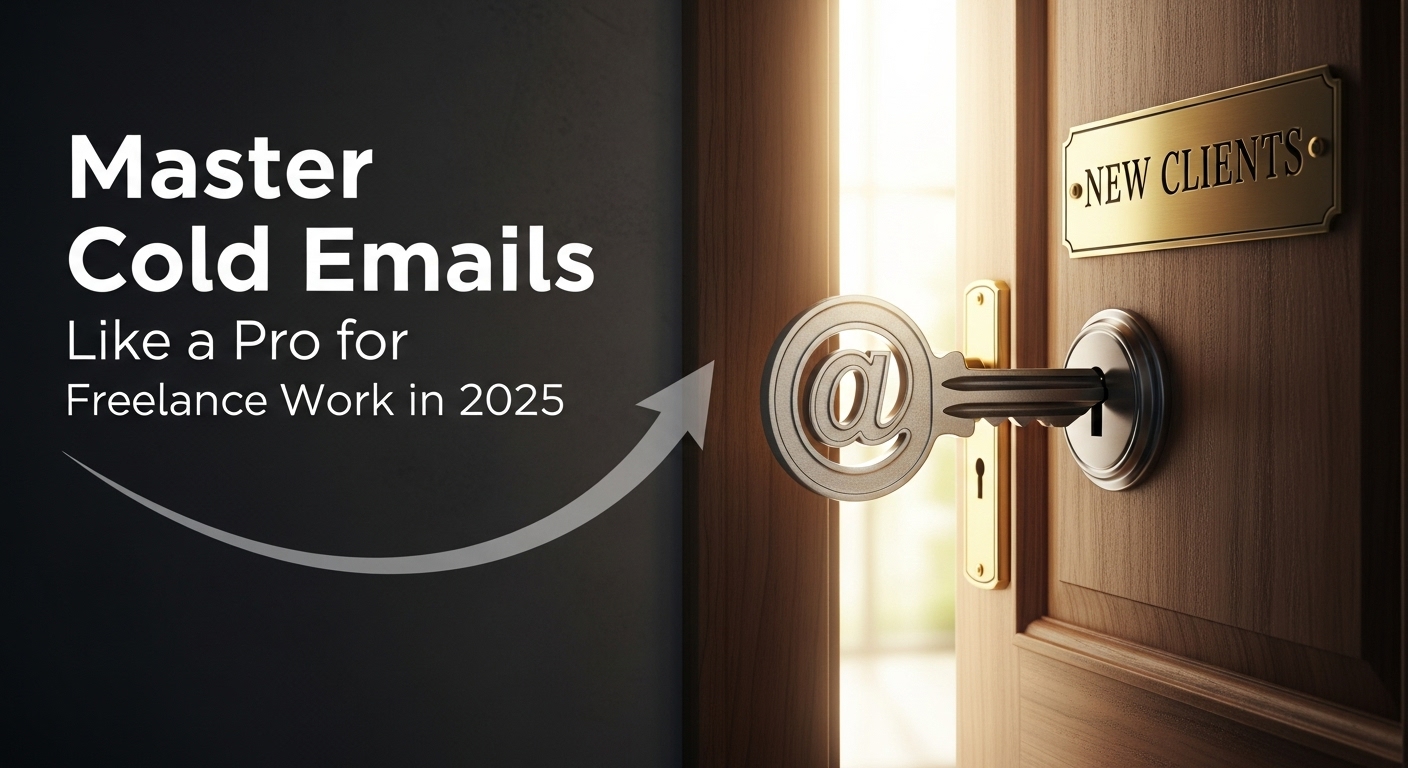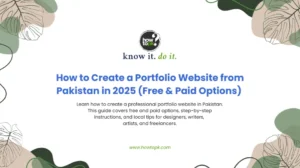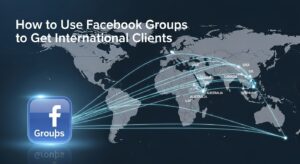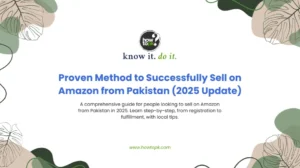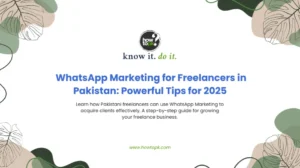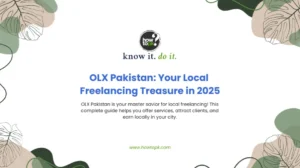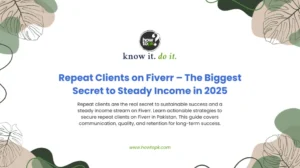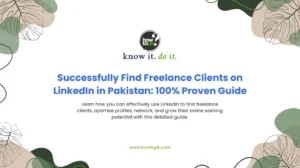Landing freelance work in Pakistan can feel like a challenge, especially when you’re just starting out or trying to expand your client base beyond local networks or popular platforms. While many freelancers rely on marketplaces, there’s a powerful, often overlooked strategy that can open doors to exciting opportunities: cold emailing. Yes, sending an email to someone you don’t know might seem daunting, but when done right, it’s incredibly effective for securing high-quality freelance work.
This guide will walk you through every step of the process, specifically tailored for the Pakistani context, helping you turn cold outreach into warm leads and steady projects.
Think of cold emailing not as “spamming,” but as a direct, professional way to introduce your skills to potential clients who might genuinely need them. It’s about being proactive, strategic, and creating your own opportunities instead of waiting for them to come to you.
Understanding Cold Emails for Freelance Work
What Exactly is a Cold Email?
A cold email, in the context of freelancing, is an initial email sent to a potential client whom you’ve had no prior contact with. It’s your way of introducing yourself, your services, and how you can add value to their business. Unlike a job application or a response to a posted gig, you’re initiating the conversation entirely.
Why Cold Emailing Works for Freelancers in Pakistan
Cold emailing is particularly powerful in Pakistan for several reasons. Firstly, it allows you to bypass the intense competition on freelance platforms where hundreds of freelancers bid for the same project. Secondly, it gives you direct access to decision-makers, leading to potentially higher-paying, more stable projects. L1astly, it helps you build a strong, independent client base, reducing your reliance on platform algorithms and fees.
Step 1: Define Your Niche and Ideal Client
What to Do: Pinpoint Your Specialization
Before you even think about writing an email, you need to be crystal clear about what services you offer and to whom. Are you a content writer specializing in tech blogs? A graphic designer focusing on branding for local startups? A web developer building e-commerce sites?
- Identify your strengths: What are you genuinely good at? What do you enjoy doing?
- Consider market demand: Research what services are in demand in Pakistan. Look at local businesses, startups, and industries.
- Define your ideal client: Who would benefit most from your services? Are they small businesses, corporations, NGOs, or individuals? What industry are they in? What are their typical challenges? For example, if you’re a social media manager, your ideal client might be a local fashion brand struggling with online engagement.
Common Mistake: Being too broad. If you say you do “everything,” you actually offer nothing specific. Narrow down your focus.
Step 2: Research and Find Your Prospects
Once you know who your ideal client is, the next step is to find them. This involves identifying businesses or individuals who fit your criteria and could benefit from your services.
Sending 10 highly personalized emails to relevant prospects is far more effective than sending 100 generic emails to random contacts. Targeted outreach significantly increases your success rate.
- Google Search: Use specific search queries like “digital marketing agencies Lahore,” “tech startups Karachi,” “SME businesses Islamabad,” “e-commerce companies Pakistan,” or “textile exporters Faisalabad.”
- LinkedIn: This is your goldmine. Search for companies in your target industry, then look for decision-makers like CEOs, Marketing Managers, HR Managers, or even department heads. Many professionals in Pakistan have active LinkedIn profiles.
- Company Websites: Once you find a company, visit their website. Look for contact information (email addresses on “Contact Us,” “About Us,” or “Team” pages). Pay attention to their services, recent projects, and any apparent gaps where your skills could fit.
- Industry-Specific Directories/Associations: Look for local chambers of commerce (e.g., Karachi Chamber of Commerce & Industry), industry associations (e.g., PASHA for IT), or business directories that list companies in your niche.
- News and Publications: Follow local business news. If a company just raised funding, launched a new product, or expanded, they might need your services.
Real-World Tip: Use Email Finder Tools (Carefully). Some online tools can help you find email addresses based on a company’s domain. Use them ethically and always verify the email if possible. Many tools offer free trials or a limited number of lookups. You can also guess common email formats (e.g., firstname.lastname@company.com or info@company.com).
Common Mistake: Not finding the right person. Don’t email a generic info@ email unless you have no other option. Aim for a specific individual who can make decisions or influence them.
Step 3: Craft a Compelling Subject Line
The subject line is the first thing your prospect sees. It determines whether they open your email or send it straight to trash. It needs to be concise, intriguing, and relevant to their interests.
- Personalization: Include the recipient’s name or company name.
- Pique Curiosity: Ask a relevant question or hint at a benefit.
- Be Specific: Mention your service or their industry.
- Keep it short: Aim for 4-7 words, ideally under 50 characters, especially for mobile viewing.
Examples:
- “Idea for [Company Name]’s SEO” (if you’re an SEO specialist)
- “Quick thought on your website design, [Client Name]” (for a web designer)
- “Improving [Their Industry]’s Content Strategy” (for a content writer)
- “From [Your Name]: Supporting [Company Name] with [Your Service]”
- “Question about your [specific project/challenge]”
Avoid: Generic, salesy, or spammy subject lines like “Freelance Services Available” or “Amazing Offer!” These will get ignored or marked as spam.
Step 4: Write the Irresistible Cold Email Body
This is where you make your case. Your email needs to be concise, value-driven, and clearly articulate how you can solve a problem for them.
1. The Opening Hook (1-2 sentences)
Start with a brief, personalized opening that shows you’ve done your research. This isn’t about you; it’s about them. Mention something specific about their company, recent news, or a project they’ve undertaken.
Example: “I noticed your recent campaign for [Product Name], and the visuals were impressive. As a seasoned graphic designer, I appreciate thoughtful branding.”
Example: “I came across your website while researching effective e-commerce stores in Pakistan, and I was particularly impressed by [specific feature/aspect].”
2. The Problem/Opportunity (1-2 sentences)
Briefly highlight a potential challenge they might be facing or an opportunity they might be missing, which your services can address. This shows you understand their world.
Example: “Many growing businesses like yours often struggle to produce consistent, high-quality content that truly engages their audience.”
Example: “With the increasing online competition, having a robust SEO strategy is crucial for companies in the [their industry] sector.”
3. Your Solution/Value Proposition (2-3 sentences)
This is where you connect your skills to their need. Explain how your services can solve their problem or help them seize an opportunity. Focus on benefits, not just features.
Example: “As a specialized content writer for tech firms, I help companies like yours generate traffic and convert leads through well-researched, engaging blog posts and website copy. My recent work for [Similar Company] resulted in a 30% increase in organic traffic.”
Example: “I assist businesses in optimizing their online presence through tailored web development solutions, ensuring a seamless user experience and improved conversion rates. I recently helped a client in the retail sector increase their online sales by 15%.”
4. Social Proof (Optional, 1 sentence)
If you have a very quick, impactful piece of social proof (e.g., a notable client or a quantifiable result), add it here. Don’t overdo it.
Example: “My work has been featured on [well-known platform] and I’ve worked with brands such as [Brand A] and [Brand B].”
5. Call to Action (1 sentence)
Make it easy for them to take the next step. Keep it low-commitment. Don’t ask for a meeting immediately. Instead, suggest a brief chat or offering to send more information.
Example: “Would you be open to a quick 15-minute call sometime next week to discuss this further?”
Example: “Would you be interested in seeing a brief case study on how I’ve helped similar businesses achieve [specific result]?”
Example: “If this sounds relevant, I’d be happy to send over some examples of my work.”
6. Professional Closing
Sign off professionally.
Example: “Best regards,” “Sincerely,” “Looking forward to hearing from you,” followed by your name.
Real-World Tip: Keep it Short. Aim for 5-7 sentences, no more than 10-12. Decision-makers are busy. They will skim. Get straight to the point.
Common Mistake: Talking too much about yourself. Your email isn’t a resume. It’s about how you can help THEM.
Local Context Tip: Personalization is Key. In Pakistan, business relationships often start with a personal touch. Showing you’ve done your homework and understand their specific needs or challenges will be highly appreciated.
Step 5: Perfect Your Email Signature
Your email signature is your digital business card. It should be clean, professional, and provide all necessary contact information.
- Your Full Name
- Your Professional Title/Service (e.g., “Freelance UI/UX Designer,” “SEO Content Strategist”)
- Your Phone Number (Optional, but useful for local contacts)
- Your Website/Portfolio Link (Crucial!)
- LinkedIn Profile Link (Optional, but recommended)
Example:
Javed Khan
Freelance Web Developer | Crafting Modern Digital Experiences
Phone: +92 3XX XXXXXXX
Portfolio: www.yourwebsite.com
LinkedIn: linkedin.com/in/javedkhan
Common Mistake: No signature or unprofessional one. This makes you look less credible and harder to reach.
Step 6: Send Your Cold Email (And Track It!)
Once your email is polished, it’s time to send it. Consider the best time to send and how you’ll track your outreach.
- Timing: Generally, Tuesday to Thursday, between 9:00 AM and 11:00 AM, or 2:00 PM and 4:00 PM local time (Pakistan Standard Time) are considered good times to send business emails. Avoid Mondays (too busy catching up) and Fridays (people winding down).
- Email Service Providers: Use your professional email address (e.g., yourname@yourdomain.com) instead of a generic Gmail or Hotmail account for better credibility.
- Tracking Tools: Some email extensions or services offer email tracking, letting you know if your email was opened, when, and how many times.2 This data is invaluable for planning your follow-ups.
Real-World Tip: Use a professional email address. Investing in a domain and professional email address (e.g., yourname@yourbusiness.com) projects a much more serious and trustworthy image than a generic free email address. Many local hosting providers offer this as part of their packages.
Step 7: Master the Art of the Follow-Up
Most cold emails aren’t responded to on the first try. Follow-ups are crucial and often determine your success.
- First Follow-Up (2-3 days after initial email):
- Purpose: Gentle reminder.
- Content: Briefly re-state your value proposition and refer back to your previous email.
- Example: “Hi [Client Name], just wanted to gently bump my previous email regarding how I could help [Company Name] with [specific service]. I believe my expertise in [your niche] could significantly benefit your ongoing efforts.”
- Second Follow-Up (5-7 days after first follow-up):
- Purpose: Offer additional value or a different perspective.
- Content: Share a relevant article, a quick tip, or a different case study.
- Example: “Hope you’re well! I came across this article on [relevant topic] and thought it might be interesting for [Company Name]. It also reminded me of how my [specific skill] could potentially address [their challenge].”
- Third Follow-Up (7-10 days after second follow-up):
- Purpose: The “breakup email.”
- Content: Acknowledge that they might be busy and offer a final chance to connect, or suggest you’ll reach out again later.
- Example: “Hi [Client Name], I understand you’re incredibly busy, and if now isn’t the right time, that’s perfectly fine. I’ll take this as a sign to close the loop for now. However, if anything changes or you have needs related to [your service] in the future, please don’t hesitate to reach out. I’d be happy to help.”
Real-World Tip: Don’t get discouraged. A low response rate is normal for cold emails. It’s a numbers game, and persistence is key. Not every “no” is a rejection of you; it’s often just a “not right now.”
Common Mistake: Giving up after the first email. This is the biggest mistake. Most success comes from follow-ups.
Step 8: Handle Responses Professionally
Once you get a response, act quickly and thoughtfully, whether it’s a “yes,” “no,” or “maybe.”
- Positive Response (e.g., “Tell me more,” “Let’s connect”):
- Action: Confirm a time for a call, offer to send a portfolio, or ask clarifying questions to understand their needs better.
- Example: “That’s fantastic! I’m available [suggest 2-3 specific times]. Please let me know what works best for you, or if you prefer, I can send over a detailed proposal outlining how I can assist with [their specific need].”
- Negative Response (e.g., “Not interested,” “We’re all set”):
- Action: Thank them for their time, acknowledge their response, and keep the door open for future possibilities. Don’t argue or try to convince them.
- Example: “Thank you for your prompt response, [Client Name]. I appreciate you letting me know. I’ll keep [Company Name] in mind and wish you all the best. Perhaps our paths will cross in the future!”
- Neutral/Questioning Response (e.g., “What are your rates?”, “Can you send samples?”):
- Action: Provide the requested information clearly and concisely, and then pivot back to a call to action.
- Example: “Thanks for asking, [Client Name]! My rates typically range from [X] to [Y] depending on the project scope, and I’ve attached a brief case study relevant to [their industry]. Would it be helpful to schedule a quick chat to discuss your specific needs and how my services fit within your budget?”
Local Context Tip: Building Rapport. In Pakistan, business often thrives on personal connections. Even if an initial cold email leads to a “no,” maintaining a polite, respectful tone can leave a positive impression that might lead to opportunities down the line through referrals or changed circumstances.
Common Challenges and How to Overcome Them
Low Response Rates
This is normal for cold outreach everywhere. Don’t take it personally. Focus on refining your targeting, subject lines, and value proposition. The more personalized and relevant your email, the higher your chances.
Finding Email Addresses
This can be tricky. Leverage LinkedIn heavily. Many Pakistani professionals are active there. Look for company websites, and sometimes even a general info@ or sales@ email can be a starting point if you can’t find a direct contact. Experiment with common email formats (e.g., first.last@company.com).
Perceived Lack of Experience (for beginners)
If you’re new, focus on building a strong portfolio with personal projects or pro bono work. Instead of saying “I don’t have experience,” showcase what you can do. Emphasize your dedication, quick learning ability, and fresh perspective. Offer competitive rates initially to build your reputation.
Cultural Nuances
While cold emailing is generally accepted, maintain a professional and respectful tone. Avoid overly aggressive sales language. Be clear and concise. If the opportunity arises for a phone call, understand that business discussions in Pakistan often involve building a personal rapport, so be ready to engage genuinely.
Payment Gateway and Contract Concerns
Once you land a client, especially local ones, discuss payment terms clearly upfront. For international clients, common platforms like Payoneer are widely used for receiving payments. F3or local clients, bank transfers are common. Always have a clear contract outlining scope, deliverables, timelines, and payment terms to protect yourself.
Conclusion: Empowering Your Freelance Journey
Sending cold emails for freelance work in Pakistan isn’t just about finding clients; it’s about taking control of your freelance career. It empowers you to proactively seek out the type of work you want, with the clients you choose, rather than passively waiting for opportunities. It requires research, thoughtful writing, and persistence, but the rewards are well worth the effort.
Start small, refine your approach with each email, and don’t be afraid of “no.” Every email sent is a step forward, a chance to learn, and a potential door to your next big project. With the right strategy and a bit of Pakistani grit, you can build a thriving freelance business through cold email outreach.
Resources
- LinkedIn (for professional networking and finding prospects)
- Google Search (for company research and contact information)
- Google Workspace,
Microsoft 365,
local hosting providers offering email services - Hunter.io,
Skrapp.io – use ethically and within limits - Payoneer (for international payment reception)
- Local Banks (for domestic transfers)
- Online contract templates (search for “freelance contract template Pakistan” for local examples, or general freelance contract templates for international clients)

